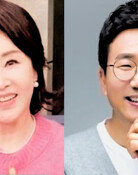The Sad Truth: Mixed-Race Attitudes
Nam (35) has been in and out of jail up until recently. He ran away from home at the age of 12 and grew up in the mountain homes of shaman practitioners and huts.
Nam searched for unpopulated areas to avoid people laughing at him for having a different shade of skin. He is a mixed-race child, born between a white American soldier and a Korean woman. He suffered so much discrimination and ill treatment that he has twice tried to commit suicide.
He left the mountains at the age of 20, but could not adjust to society, and was jailed numerous times for drug use. Nam has lived a completely different life from that of popular Eurasians such as Daniel Henney, Dennis Oh, and Kim Deanna.
Since some mixed-race entertainers started appearing frequently on TV dramas and ads, many are saying that Koreans views towards mixed-race people have changed.
In a public service ad from the National Human Rights Commission of Korea, however, Bae Gi-chul (50) shows his ID card and says, My name is Bae Gi-chul. I am a Korean. Only my skin color is different, but people say I am different from them.
Some Eurasian entertainers are popular among the younger generation, but this is merely admiration for entertainers. Average people still view mixed-race people in a negative way.
People still treat mixed-race people as strangers in society. This is not just limited to those born from Koreas sad history of war and division, but also the offspring of international marriages, which are increasing rapidly.
According to the Bureau of Statistics, international marriages are increasing every year, from 12,319 in 2000, 15,234 in 2001, 15,913 in 2002, 25,658 in 2003, to 35,447 in 2004. Marriage to Asian partners from the Philippines, Vietnam, Thailand, Uzbekistan, and others account for 30 percent of the total number of international marriages.
The view towards mixed-races is, for the most part, mixed. People hold relatively favorable views toward Eurasians, but have negative prejudices against other mixed races.
The governments policy for mixed-race people is virtually non-existent, however, as it does not even know how many of them are in Korea.
wing@donga.com zeitung@donga.com







